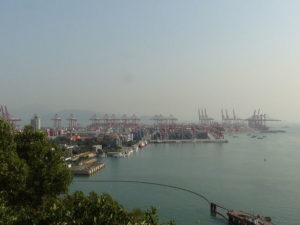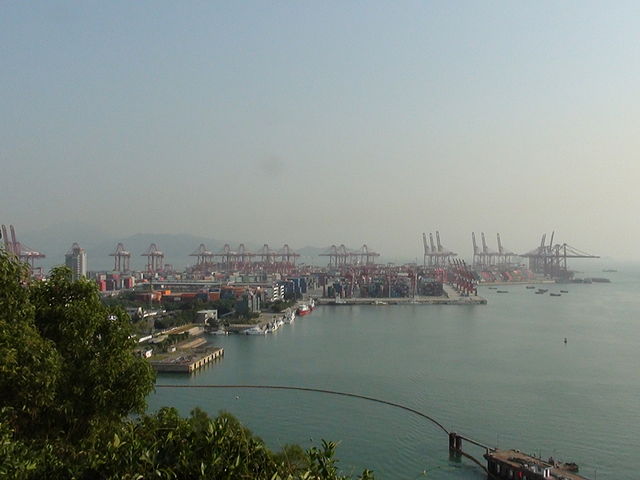 The container terminal industry may well have to learn to live with higher risks and lower returns as global trade flows have changed in the aftermath of the 2008-09 financial crisis, according to a maritime consultant.
The container terminal industry may well have to learn to live with higher risks and lower returns as global trade flows have changed in the aftermath of the 2008-09 financial crisis, according to a maritime consultant.
Container terminal owners and operators, as well as their shipping line clients, today face an era of weaker demand growth, said Neil Davidson, senior analyst for ports and terminals at Drewry Maritime Advisors, in a talk at the TOC Container Supply Chain conference recently. Meanwhile, the exponential growth in vessel size, along with much bigger and more complex liner alliances, has seen falling returns for terminal operators.
The creation of the new alliances has only served to raise the volatility of port market shares, which is feeding into a period of uncertainty about market direction and demand growth. This makes for a highly uncertain landscape against which terminal businesses have to plan future investments.
Davidson posited some possible solutions for terminal owners out of this impasse, including more alliances—or even more mergers and acquisitions. Further joint ventures between terminal operators and shipping lines could also be possible.
Alternatively, terminal operators could just learn to live with higher risks and lower returns, or pull back further from making new investments, although such an environment might also see some investors exit the industry.
China’s One Belt One Road initiative
Also needing close watching by the industry is the “One Belt One Road” (OBOR) transport network of China. Hercules Haralambides, president of Haralambides & Associates and a veteran transport consultant, said at the same event that the OBOR policy was part of wider strategy to solidify China’s presence at key nodes in global supply chains.
“There are investments in the Australian port of Darwin, as well as the Nicaragua canal, which despite financing difficulties is still on the table, and so I see the OBOR becoming a global ‘around-the-world’ policy that will sit in competition with the Trans-Pacific Trade Partnership,” he said.
He added that Chinese authorities conceived OBOR as “a US$1 trillion idea which they believe will have an economic multiplier of 2.5.”
Haralambides said the two European ports the Chinese authorities are focusing on the most are Piraeus in Greece, where Chinese terminal operator Cosco Pacific now has the concession to manage container operations, and the Italian gateway of Venice.
Venice is an important location, he continued, because it has good rail connections with North Europe as well as proximity to logistics parks around the industrial center of Turin.
In Piraeus, the fact that Cosco Pacific has taken control of the port means that the Ocean Alliance will call there.
“You should also look at Port Said—the Chinese are taking a great interest in East Port Said because they see Suez as an alternative to Panama,” he added. “The picture is that the Mediterranean and Suez are becoming more important vis-a-vis serving the U.S. east coast, which could possibly be done better from there than via Panama.
“This is not just about transport investment, but should also be seen in the context of geopolitics and strategic objectives,” he said.
Fellow speaker Olaf Merk added that Chinese port investments were inherently linked with the country’s wider policy, regardless of the actual organization making the investments.
“It is important to realize that a lot of the Chinese terminal operators are acting as an arm of the Chinese government, so it really is a case of geopolitics acting in concert with supply chain,” Merk commented.
Photo: HH755





